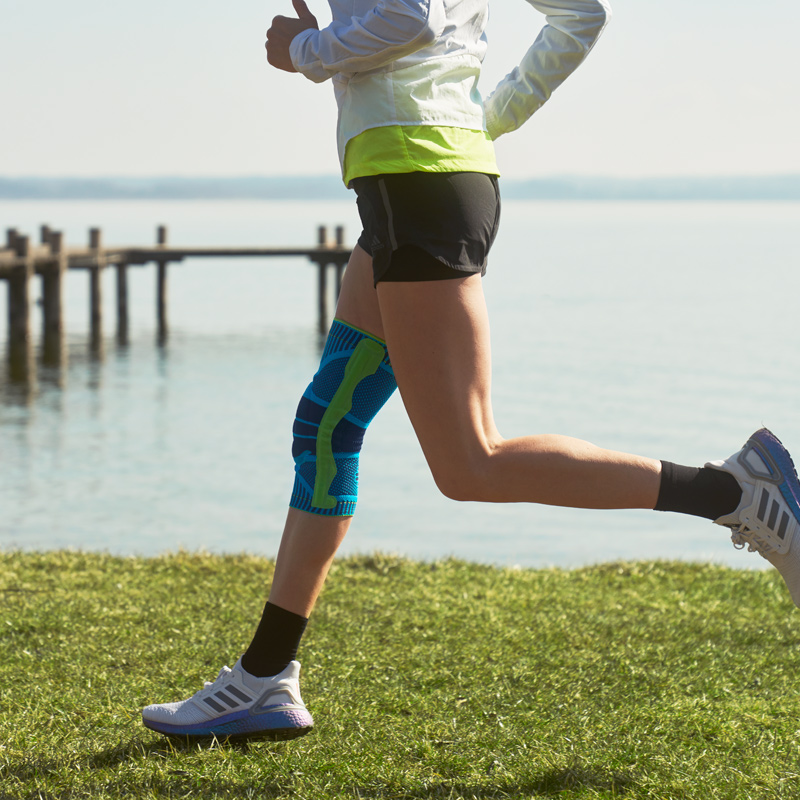
Knee Pain after Running
Inner Knee Pain
Pes Anserine Bursitis: Symptoms, causes and treatment
Pes anserinus is the name of a tendon structure made up of the tendons from three muscles: the semitendinosus muscle, the gracilis muscle and the sartorius muscle. If the tendon insertion located on the inner tibial plateau has become inflamed, the diagnosis will be pes anserine bursitis. The inflammation is usually caused by inappropriate mechanical stress on the leg. If you spend a long time on an uneven or unstable surface, your leg will be subjected to excessive strain. Muscular imbalance has a similar effect. But worn-out running shoes or a sub-optimal running technique, too, can lead to pes anserine bursitis.
Anyone can be affected: from beginners who haven’t found the ideal running technique yet and have exceeded their boundaries with too much enthusiasm, to professionals who are so focused on their training that certain aspects have been overlooked.
If you suffer from inner knee pain, pain in the tibia or lower leg, examine your running training thoroughly and ask yourself the following questions:
- What type of routes have you been running lately? Are they hilly or uneven, do large parts go through the woods?
- Are your muscles strong enough for the trails you’ve chosen?
- Are your running shoes still OK?
- What is your running technique like?
Important: only your physician will be able to confirm whether your knee pain really is pes anserine bursitis. So if your pain is ongoing, you should definitely make an appointment so your physician can determine the cause.
PES ANSERINE BURSITIS? KNEE SUPPORT!
Stabilises your muscles and improves the coordination of your knee.
Discover Knee SupportPes anserine bursitis: how a support can help
Of course, you want to eliminate your pain as quickly as possible and get back out there. When you return to your running training, wearing a knee support may help. It stabilises your knee and protects it from recurring excessive strain – this includes the time after your come-back.
If you are suffering from pes anserine bursitis, your knee needs stability and strengthening – and that is exactly what our Sports Knee Support provides. Find out more here about what the support can do for your running training.
How exactly, we explain herePatellar Tendonitis
Pain in the front or below the knee often indicates patellar tendinitis. Learn more about how it develops and what you should keep in mind when running.
Runner's Knee
Runner's knee is one of the most common complaints among runners. Here you can find out everything you need to know about symptoms, causes and treatment.
Pain in the Back of the Knee
Pain in the back of the knee is often mysterious at first. We have summarised here what is behind it and what you can do about it.
Didn't find what you were looking for here? Does your knee pain manifest itself in other ways or is it perhaps not caused by sport? Then find out about other possible causes from our Bauerfeind Medical colleagues in the knee pain section!






